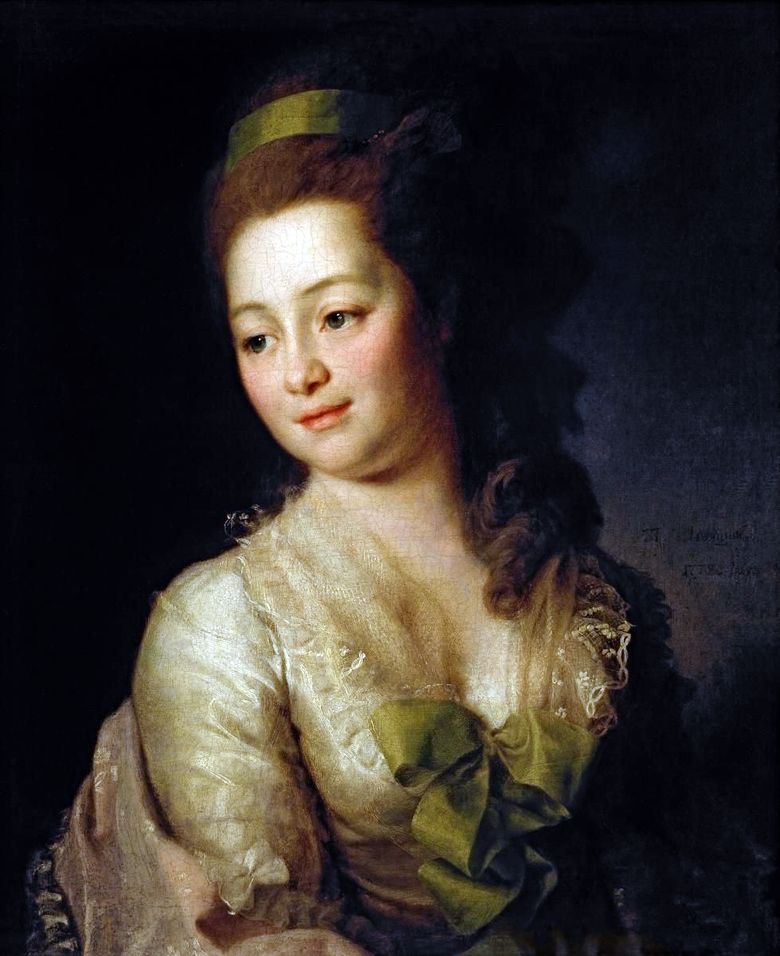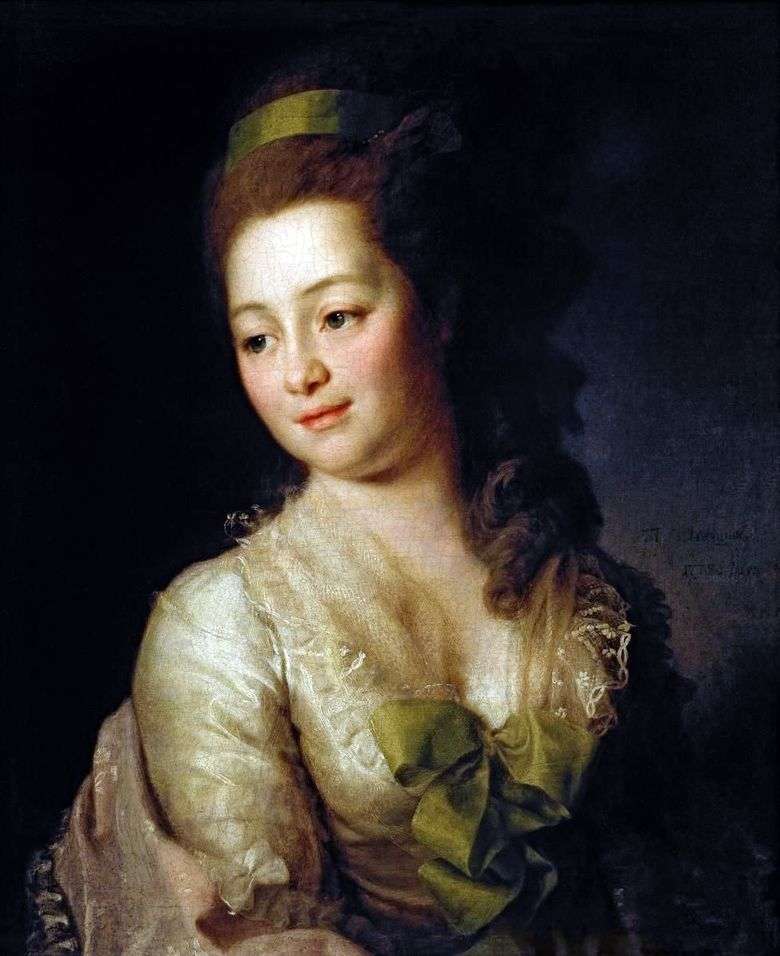
Maria Alekseevna Dyakova – the daughter of the Chief Prosecutor of the Senate, Alexei Afanasyevich Dyakov and Avdotya Petrovna, nee. Princess Myshetskoy.
A portrait of Maria Alekseevny Dyakova, imbued with a feeling of deep sympathy of the author for her model. The charm and attractiveness, sharp mind and sympathetic heart of the young woman made many of her friends, the poets dedicated poems to her. Romantic is the story of her marriage. Acquaintance with N. A. Lvov soon turned into a touching mutual love. Dyakova did not receive parental consent for marriage: the groom was poor. They secretly got married in 1779. and at first they had to hide it. Later, the parents learned and blessed the marriage in 1783. The Lions’ family lived happily together. They had five children.
The House of Lvov was one of the centers of the spiritual and cultural life of St. Petersburg. Dyakova’s two sisters were married: Daria Alekseevna, the youngest, was the wife of G. R. Derzhavin, the other, Alexandra Alekseevna, was married to V. V. Kapnist, a poet and an outstanding playwright. Levitsky was also a regular participant in the meetings that took place in these houses.
The portrait of Dyakova is one of the best works of the painter, the creative ideals of the artist, who found an extremely successful model, were embodied in it with a new force. Like other works of Levitsky’s chamber style, the portrait of Dyakova was decided by very meager means, without any embellishment, capable of diverting the viewer’s attention.
However, the artist is not at all inclined to repeat the same stencil of the compositional scheme, the same arrangement of figures, and uniform color combinations. With almost imperceptible differences in the inclination of the head, the bending of the neck, the movement of the shoulders, he gave each character an independent posture, while preserving her liveliness and naturalness; the same happened with the costume, hairstyle, jewelry, details – always unique. The artist, mobilizing his inventiveness and the resources of the painter, sought in each case new combinations that were similar only in their vital persuasiveness and psychological precision.
 Portrait de M. A. Dyakova – Dmitry Levitsky
Portrait de M. A. Dyakova – Dmitry Levitsky Retrato de M. A. Dyakova – Dmitry Levitsky
Retrato de M. A. Dyakova – Dmitry Levitsky Portrait of A. D. Levitskaya (Agashi) by Dmitry Levitsky
Portrait of A. D. Levitskaya (Agashi) by Dmitry Levitsky Portrait of A. I. Vorontsov by Dmitry Levitsky
Portrait of A. I. Vorontsov by Dmitry Levitsky Portrait of F. G. Orlov by Dmitry Levitsky
Portrait of F. G. Orlov by Dmitry Levitsky Portrait of P. N. Repnina by Dmitry Levitsky
Portrait of P. N. Repnina by Dmitry Levitsky Portrait of E. N. Khrushchova and E. N. Khovanskaya (Smolyanka) by Dmitry Levitsky
Portrait of E. N. Khrushchova and E. N. Khovanskaya (Smolyanka) by Dmitry Levitsky Portrait of Praskovya Vorontsova by Dmitry Levitsky
Portrait of Praskovya Vorontsova by Dmitry Levitsky